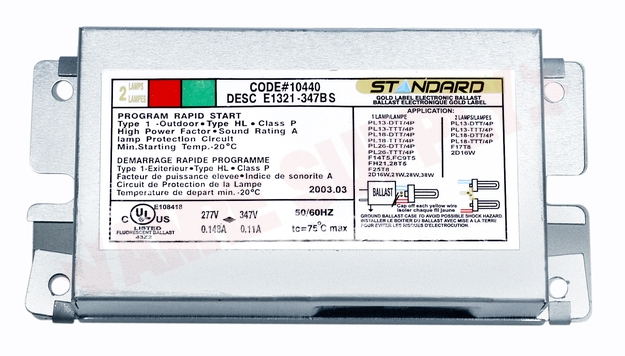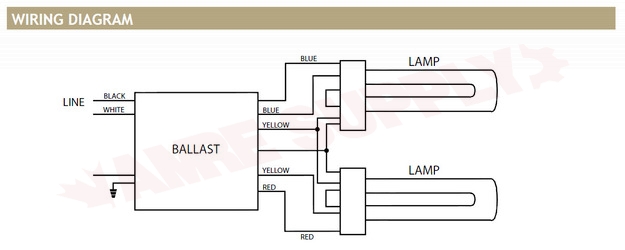Account Holder? Login for Wholesale Pricing
 Call 1-800-661-9891
Mon-Fri 8am-8pm | Sat 9am-6pm (EST)
Call 1-800-661-9891
Mon-Fri 8am-8pm | Sat 9am-6pm (EST)
Standard Lighting Electronic Compact Fluorescent Ballast, 347V
No Longer Available
This part is no longer available from the manufacturer.
| SKU: | E22150-277-347-SL |
Standard Electronic Compact Fluorescent Ballast. E22150-277-347-SL GLB
Operates
1 21W 2D
2 21W 2D
1 28W 2D
2 24W TTL
2 26W TTT
1 F21T5
2 28W 2D
1 40W TTL
1 50W TTL
1 32W TTT
2 32W TTT
1 36W TTT
2 36W TTT
1 42W TTT
Program start electronic ballasts accurately heat the lamp cathodes prior to lamp ignition. This type of system allows for frequent switching (up to 50 000 on/off) while providing maximum lamp life and energy efficiency, making them ideal for applications using occupancy sensors.
A ballast is an integral component of most modern lighting systems. It is primarily designed to perform three critical tasks: Deliver the proper voltage to start or ignite the lamp(s), Regulate the electric current flowing through the lamp(s), and Compensate for variations in line voltage. The ballast must correspond exactly to the requirements of the lamp it is designed to operate in order to ensure optimal performance.
Product Specifications
| Electronic | |
| Standard | |
| 20 | |
| 1-3/16 | |
| 30.0 | |
| 60 | |
| 347 | |
| Series | |
| 5 | |
| 127.0 | |
| 90 | |
| -20 | |
| -4 | |
| 4-13/32 | |
| 112.0 | |
| 31006 | |
| Program Start | |
| Active |
Product Downloads
Technical Instructions
Similar Products Found In



